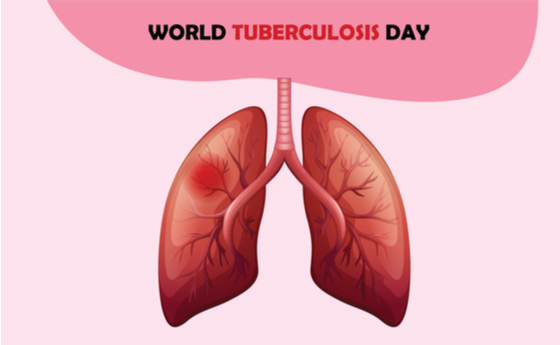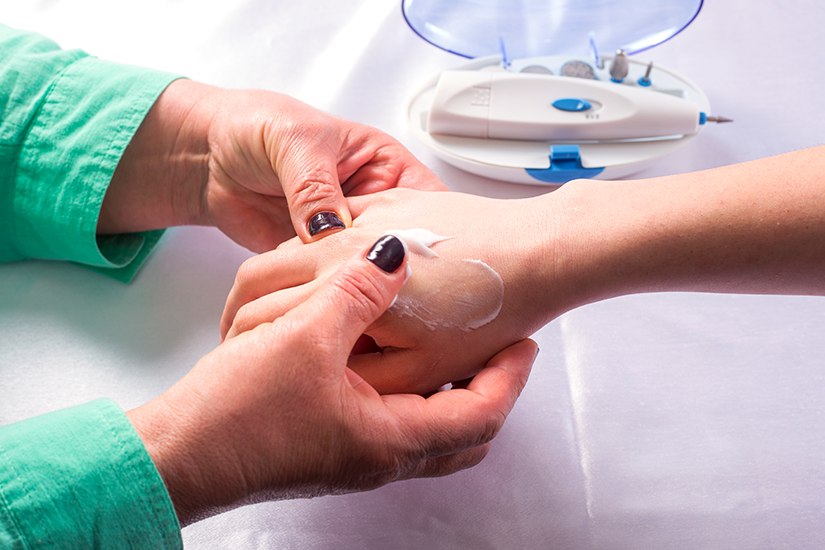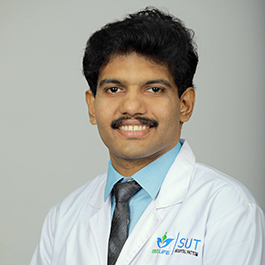- Emergency Ambulance Services
- 8606811111
- 0471-4077777, 0471-7177888
- gro@sutpattom.com
All about TB March 24th World TB Day
Dr. Sofia Salim Malik, Senior Consultant Pulmonologist, SUT Hospital, Pattom
TB is the second important cause of death among all infectious diseases, second only to Covid-19. So more investment will save millions of live accelerating the end of the TB pandemic, without adequate general resources we cannot win the fight against TB and reverse the severe impact of Covid-19. The disruptions caused by the pandemic have led to increased mortality from TB, decreased the number of people diagnosed and treated for TB and dangerously affected the rights of people with TB.
World TB Day falls on March 24th, years back on this day in1882 Robert Koch discovered Mycobacterium tuberculosis, the bacteria which causes Tuberculosis. To educate the public about the impact of TB around the world this day is chosen to commemorate this event. The theme chosen for the TB day this year is ‘Invest to End TB, Save Lives’. This theme conveys the urgent need to invest resources to ramp up the fight against TB to fulfill the commitments to end TB. It remains one of the world’s deadliest infectious killers. Each day over 4100 people die due to TB and close to 28,000 people fall ill due this preventable and curable disease. Global effort to combat TB has suffered a setback during the past two years due to the Covid-19 pandemic and it has reversed the progress achieved in the past years to End TB.
TB deaths have increased in 2020 for the first time over the past decade. Global TB targets are mostly off-track although there are some region success stories. The most obvious impact is a large global drop in the number of people diagnosed with TB and WHO reported this fall from 7.1 million in 2019 to 3.8 million in 2020.
Reduced access to TB drug and treatment has resulted in increased TB deaths, other impact are eduction in number of people provided with treatment for drug resistant TB, fall in global spending on TB drug, treatment and prevention services. So actions to reverse their impacts are urgently needed, to restore access to TB services.
Currently the budget allotted for the elimination of TB is less than half of the commitments made by the world leaders 4 years ago. Yet TB interventions are some of the most cost effective of all public health interventions. Therefore financial investments come foremost followed by hard work, determination, emotions and energy to end this disease. So this tear’s TB day is about putting all these investments into a common goal saving lives. So raising awareness and urgent actions will make these global efforts fruitful.
What is TB?TB is an infectious disease which can affect any part of our body. The main organ affected by TB is lung. The symptoms of TB develop slowly, sometimes months and years after an initial infection, the infection due to TB bacilli may not cause any symptoms this condition is called latent TB and up to 10% of people with latent TB will develop active TB eventually. An active TB patient is the ore who have symptoms of TB and hence the disease.
What are the symptoms of TB? * Tiredness or fatigue * Night sweats * Fever * Loss of appetite and weight * Cough of more than 2 weeksSymptoms are related to the organ of involvement, hence also can present as swollen lymph nodes, abdominal pain, joint pains, headache,convulsion and seizure.
How does TB spread?TB spreads through droplets when patient with TB disease talks, cough or sneeze. Prolonged periods of contact with an infected person like household contacts are at a high risk of getting infection.
Who’s at risk?- People with poor immune status – those with diabetes, renal failure on dialysis, or cancer treatments or disease which weaken their immune systems like HIV.
- People living in crowded conditions like slums, jails, etc.
- Smokes, alcoholics and those who abuse drugs.
- Extremes of age
Diagnostic test depends on the type of TB whether latent or active and also on the organ involved.
- Checking Sputum for TB bacilli by smear microscopy or newer molecular methods like Gene xpert.
- Chest X-ray.
- Generally TB can be diagnosed in the absence of positive diagnostic tests in people with high risk of suspicious.
- CT Scan, MRI or Ultrasound Scan can be utilized for the diagnosis of extra pulmonary TB.
If adequately treated, TB is a fully curable disease. Antibiotics taken in combination in specified doses for duration of six months cures pulmonary TB. Duration of treatment can be prolonged for Tb affecting other regions like bones and the nervous system. During resistant TB requires a longer course of treatment depending on extend of drug resistance.
Preventing TB infectionThis is by preventing the spread of the infections, by following cough etiquette, encourage proper ventilation, following correct treatment and co-operating with the public authorities in their efforts against TB.









